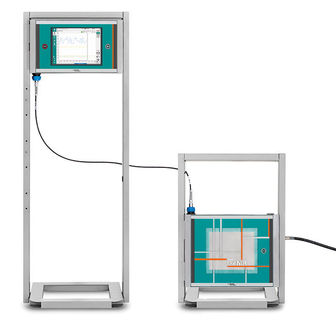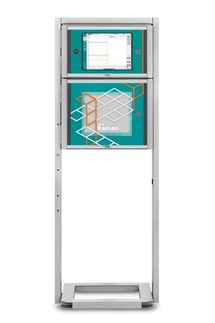To use all functions of this page, please activate cookies in your browser.
my.bionity.com
With an accout for my.bionity.com you can always see everything at a glance – and you can configure your own website and individual newsletter.
- My watch list
- My saved searches
- My saved topics
- My newsletter
Hearing testA hearing test is an evaluation of the sensitivity of a person's sense of hearing, most often performed by an audiologist using an audiometer. Audiologists are the only health professionals with extensive training on the anatomy and physiology of hearing, and are the only health professionals certified to perform diagnostic hearing tests. It is used to determine a person's hearing sensitivity at different frequencies. Product highlightA hearing test is usually administered to a person by having them sit in a soundproof booth with a set of headphones over the ears or small foam insert earphones placed in the ears, which is connected to an audiometer. The audiometer produces tones at specific frequencies and set levels to each ear independently. The audiologist plots the loudness (in decibels) on an audiogram. The person having their hearing tested will convey that they have heard the tone by either raising their hand or pressing a button. As the test progresses, the audiologist plots points on a graph where the frequency is on the x-axis and the loudness on the y-axis. Once each frequency of normal hearing ability is tested and plotted the points are joined by a line so that one can see at a glance the frequencies a person is not hearing normally and to what degree the hearing loss is. Normal hearing at any frequency is a threshold of 20dBSPL or quieter, with worsening hearing the number increases. Hearing tests are often conducted at workplaces as part of health and safety initiatives. A complete hearing evaluation involves several other tests as well.[1] In order to determine what kind of hearing loss is present, a bone conduction hearing test is administered. In this test, a small vibrator is placed behind the ear or on the forehead. The vibrator vibrates at specific frequencies, and the person being tested hears tones or beeps just like in the test with earphones. This test helps the audiologist determine whether the hearing loss is conductive (caused by problems in the outer or middle ear) or sensorineural (caused by problems in the cochlea, the sensory organ of hearing) or neural - caused by a problem in the auditory nerve or auditory pathways/cortex of the brain. The audiologist may also conduct speech tests, whereby the patient repeats the words he or she hears. In addition, a test called a tympanogram is generally done. In this test, a small probe is placed in the ear and the air pressure in the ear canal is varied. This test tells the audiologist how well the ear drum and other structures in the middle ear are working, the ear canal volume indicates if a perforation in the ear drum (tympanic memebrane) is present, the middle ear pressure indicates if any fluid is present in the middle ear space (also called "glue ear" or "otitis media with effusion") and the compliance measurement indicates how well the ear drum and ossicles (3 ear bones) are moving. The last test the audiologist may perform is an acoustic reflex test. In this test a probe is placed in the ear and a loud (greater than 70 dBSPL) tone is produced. The test measures the reflexive contraction of the stapedius muscle, which is important in protecting the ear from loud noises, such as a person's own speech which may be 90dBSPL at the ear drum. This test can be used to estimate the hearing thresholds in patients that are unable to perform normal pure tone audiometry and can also give information about the vestibular and facial nerves and indicate if a lesion is present. References
|
| This article is licensed under the GNU Free Documentation License. It uses material from the Wikipedia article "Hearing_test". A list of authors is available in Wikipedia. |







